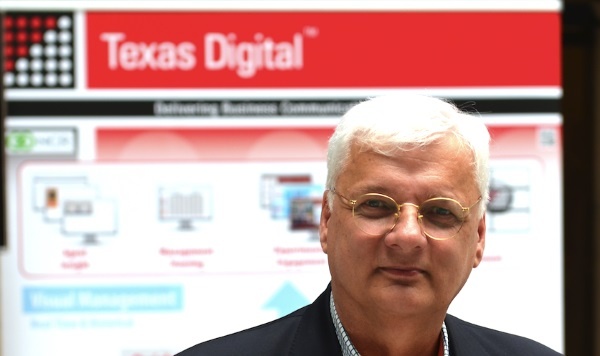
Work floor wants to make decisions based on the right information
Bringing information together
Coaches, supervisors, and managers require real-time information – not only about the process, but also about the performances of individual employees and teams. Conversion-related data, for example. Texas Digital integrates these types of KPIs on leader boards (intended for a team or department) as well as in narrowcasting formulas – for instance, by presenting KPI information on the agent desktop, either combined with gamification or not. A key term is ‘the orchestration of information.’ “At the Berlin trade show, for example, we showed how we integrate relevant elements from OBI4Wan’s social media monitoring into leader boards – besides Avaya and QlickVIEW information – for a customer. This results in different visualizations for companies with many home-based agents – such as your personal NPS – and organizations with, say, four offices on four continents.”
Which information increases involvement?
Bonnet stresses that management information is scarce in most organizations. “Five percent of people within the organization know everything. How can you get the other 95 percent on board? Often, managers are completely unaware of the lack of actionable knowledge and information that others experience. Part of my job is performing missionary work to clarify the added value of actionable knowledge and insight. What sets your team into motion? Traditionally, this information comes in peaks – that is, when things go wrong. It’s only then that the manager runs to the floor and everyone needs to listen. That’s not very effective, because you take people out of their process and fail to show any progress which employees can work with independently. A business workshop with these employees helps you identify actionable knowledge and information that are helpful to employees and teams.”
Insight into process is leading
 that the information is presented in an appealing way so people use it. How? It results from the workshop held with employees and, for example, professionals from the marketing and communications department. The BI and IT departments are also closely involved, and they’re relevant to the aforementioned business workshop – they can help determine which information is available and ensure that you provide real-time information which is consistent with the next day’s reports. When involving BI experts or traffickers, you might conclude that information from other departments can also be a valuable addition – for example, when things are expected to get busy, which is not only relevant to the contact center. In many cases, integrating your chain partners’ information contributes to a much better picture of the coherence of processes. So don’t take the information platform – a screen containing information – as your starting point; look at the underlying process you want to facilitate.”
that the information is presented in an appealing way so people use it. How? It results from the workshop held with employees and, for example, professionals from the marketing and communications department. The BI and IT departments are also closely involved, and they’re relevant to the aforementioned business workshop – they can help determine which information is available and ensure that you provide real-time information which is consistent with the next day’s reports. When involving BI experts or traffickers, you might conclude that information from other departments can also be a valuable addition – for example, when things are expected to get busy, which is not only relevant to the contact center. In many cases, integrating your chain partners’ information contributes to a much better picture of the coherence of processes. So don’t take the information platform – a screen containing information – as your starting point; look at the underlying process you want to facilitate.”Texas Digital Systems has a rich history. The company was founded by Robert Bower in 1972. He majored in chemistry and computer science at the Texas A&M University, where he also got his PhD. After completing his degree, he worked as the president of the Texas A&M University Data Processing Center in College Station (1.5 hours from Houston). There, he developed solutions for installing and monitoring tape streamers, the go-to storage media for mainframes at the time. These allowed him to determine when tapes were ready to be replaced – an activity that was as important as it was time consuming in the large computer centers of those years.
This basic principle – providing integrated communication solutions by gathering information and showing only those details that are relevant to your process – led to U.S. patents and has remained central to the vision of Texas Digital Systems. Furthermore, the company became a market leader in the U.S. with point-of-sale boards that are used in the American fast-food sector – at McDonalds, Burger King, and KFC drive-thrus, among others. Later, applications for call centers, helpdesks, data centers, command centers, and companies with large telephony systems were also developed and provided.

